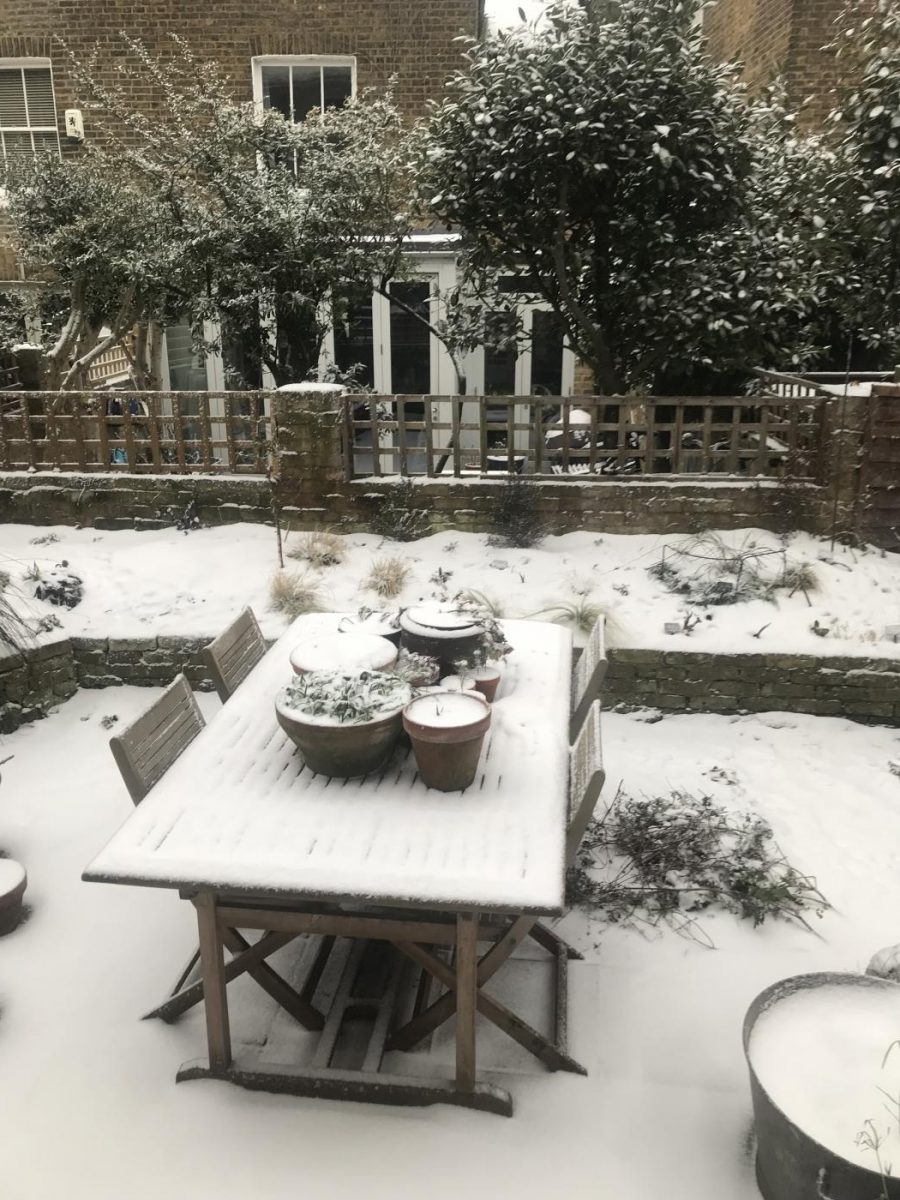The week during Storm Emma – the coldest week in our garden in eight years – was one of the most worrying weeks I’ve had as a gardener. As always when I worry about our plants however, they prove that worrying was largely a pointless exercise. After all, they’ve been doing this for far longer than I have.
My dahlias were top of the ice pops in my worry list. With winter temperatures normally barely going below 0C in our garden and perhaps -3C at worst at night on my allotment, I’d been lulled into a sense of security leaving their tubers in the ground. In fact, those in the ground bulk up over winter to supersized proportions while those stored remain the same, rot or dry out.
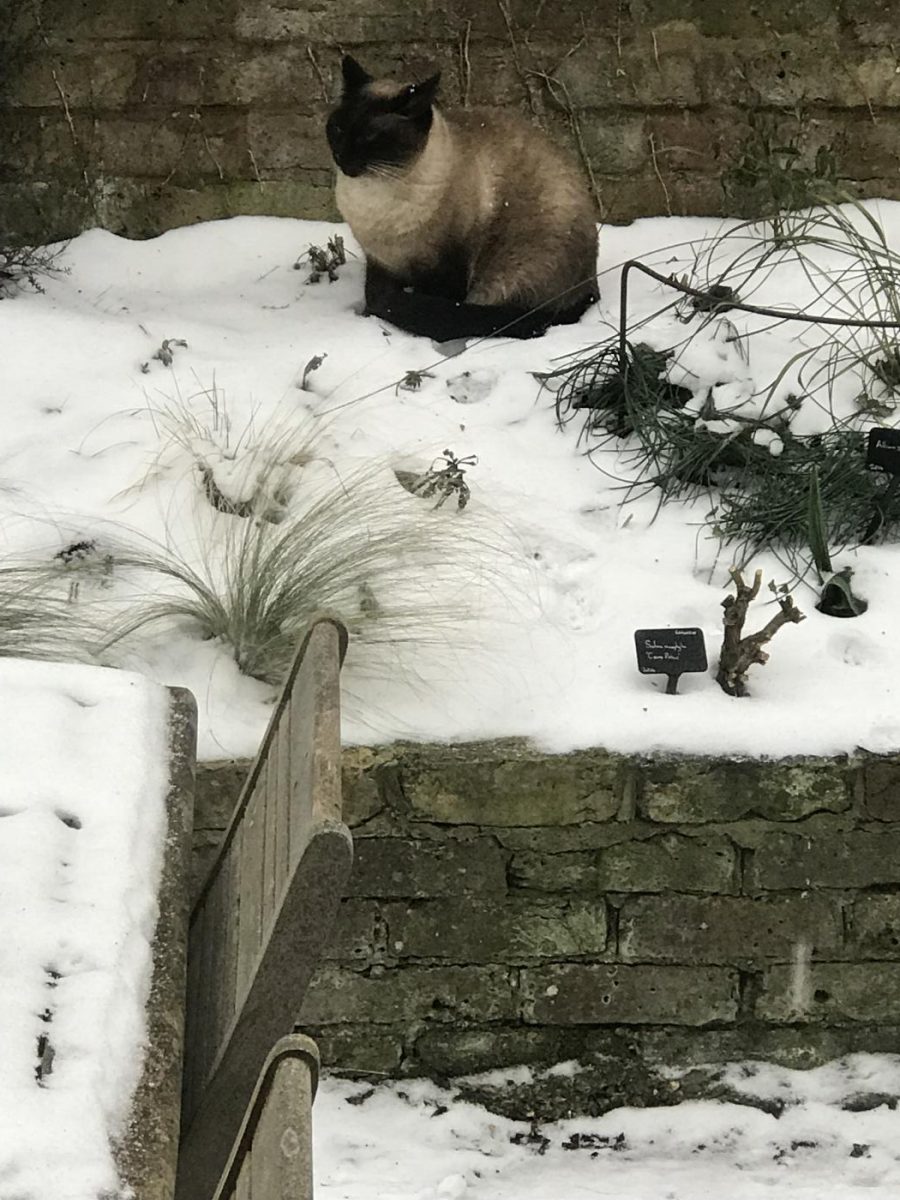
When the snow and ice hit it was too late for me to dig up or cover them more than my top dressing of compost. They were out there weathering the brunt of it and all I could do was hope. I hadn’t expected temperatures to plummet for an entire week to sit below freezing day and night. By day three as soil froze solid I’d written them off. Yet today, after the thaw I scratched off some soil and found firm tubers in both the garden and allotment. Could they have made it? There’s a long way to go as the vulnerable crowns are where it matters and they still have the cold damp of the end of winter to deal with. This is the time of year that usually claims a few.
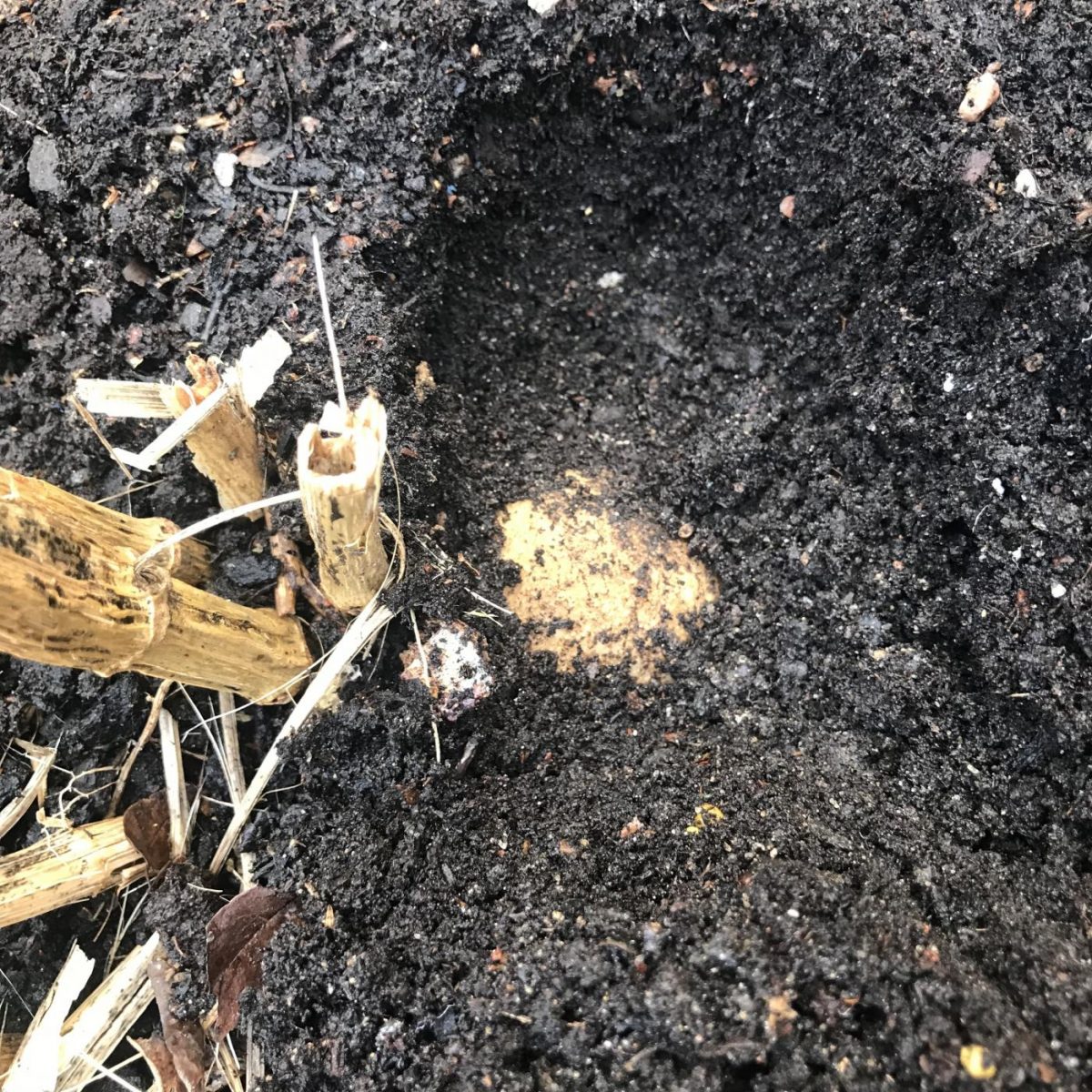
I know dahlias can be bought again and replaced – in my panic I reordered almost every key dahlia as backups – but there’s a real sense of sadness in losing a plant that has given so much pleasure for a number of years. Raised from cutting to majestic maturity. Often I find even within the same cultivar, each plant can grow with different habits, colours and personality. It’s a real loss to me even though it shouldn’t be. So I really do hope that some of my favourites like Emory Paul, Bishop of Canterbury and Hillcrest Royal – my first dahlias – do make it.
Of course, for all the romanticism, the botanist in me is interested in the science of plants surviving. There is very little information available about the precise temperatures dahlias can tolerate. I find it hard to decipher the causes of people who lose tubers in cold – you can never know the exact conditions unless seen firsthand – so most useful is when someone tells me tubers survive, say, in the ground in Scotland’s winters. You can’t question this fact.
Worst hit plants were actually my collection of ferns. Their delicate though hardy fronds held out as long as possible but all crisped and burned in the chill winds when their pots finally froze solid preventing the plants accessing water. Every plant is damaged but will regrow. The moisture loving Blechnums were first to go black and then finally my much loved Pteris cretica, though still green, went from lush to crisp.
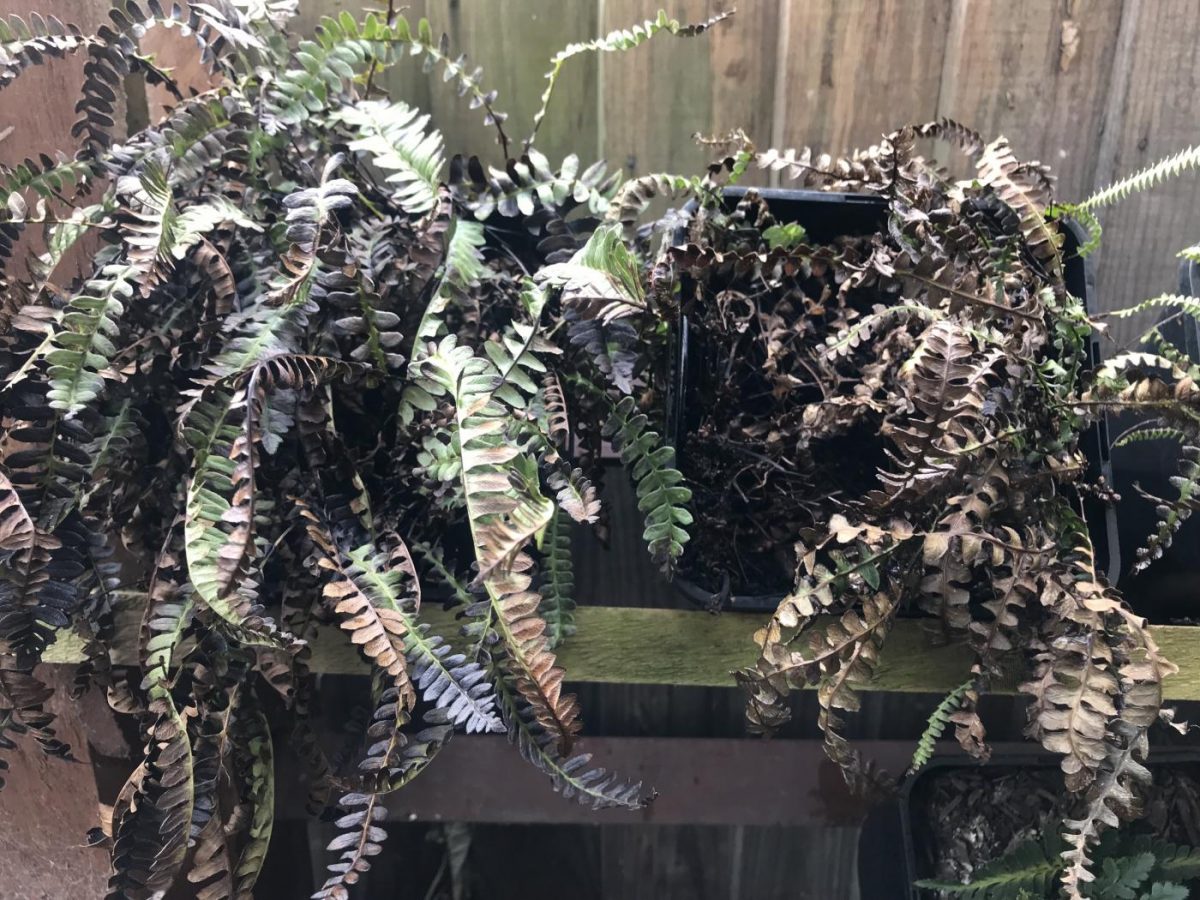
That was it for damage really from what I can see. Lots of plants suffered minor foliage damage that will soon be masked in the coming weeks’ surge for growth. Hardy broad beans and peas look worse for wear but are fine on the allotment. Melianthus major in both locations were hit but the low shoots are also ok.
Perhaps more interesting is what survived a week of sub-zero temps and frozen soil that you’d expect not to. I’ve already mentioned Pteris cretica, also Cheilanthes, another non-hardy fern was fine.
Tender Fuchsia triphylla lost its leaves as normal but is alive. An Echium pininana seedling – a sure fire victim in my mind – is unscathed. Shoots of Clematis texensis were set back while viticellas are still green. Pelargoniums wilted but have popped back. In fact, so far, none of the tender plants are displaying serious effects from the weather but we’ll see in time.
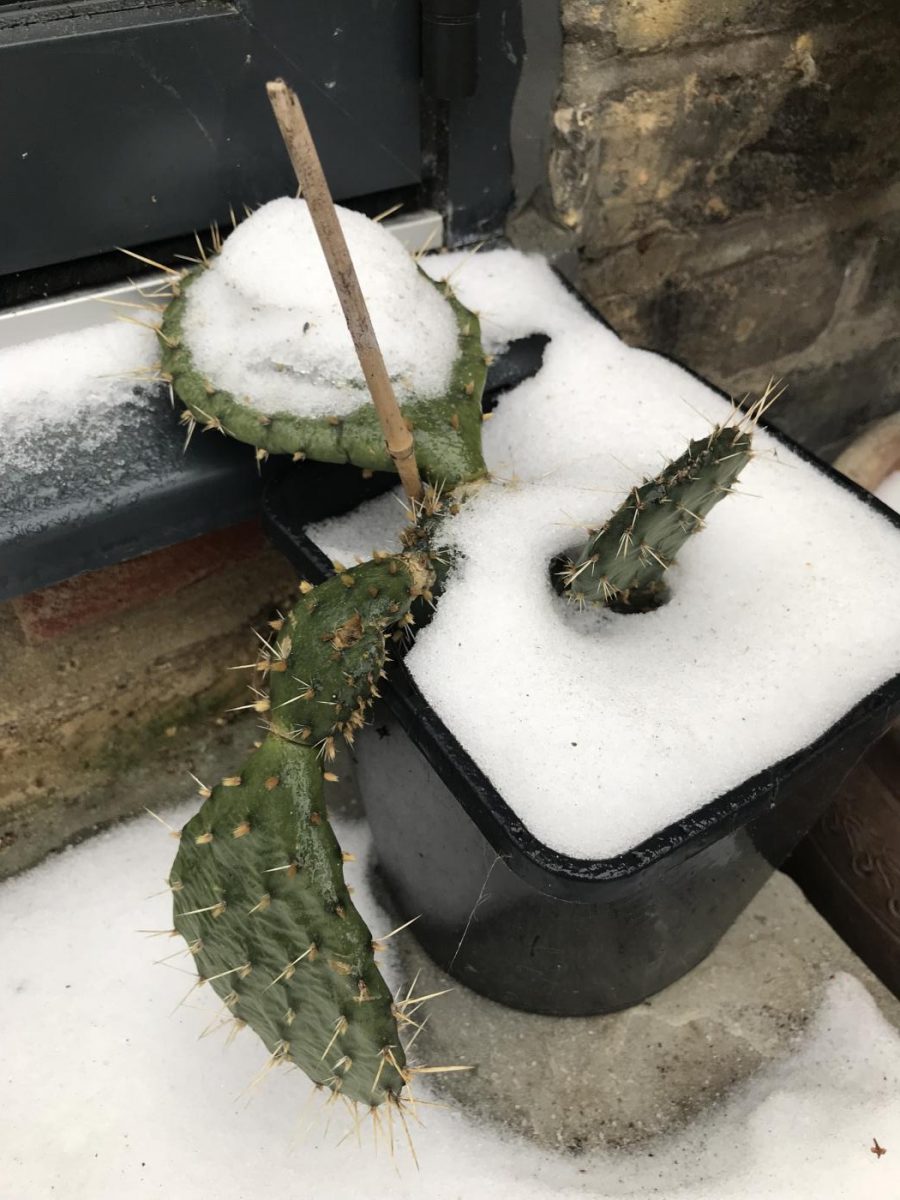
For me this week was tough to sit through – I couldn’t enjoy the snow attacking my plants – but I knew all along it held an important lesson for me. The extreme cold and the plants that survive will push my boundaries of knowledge of what can cope. In future, when the weather snaps, it will help me worry less.
Not a fun week for gardeners and of course, we’re not out of the woods yet. Last year a late April hard-frost killed more plants than Storm Emma by striking when they were at their most vulnerable with fresh shoots. Still, with the snow melting here and shoots of Fritillaria, Tulips, Alliums, Narcissi and more showing, we are at the start of spring and the only way is up.
